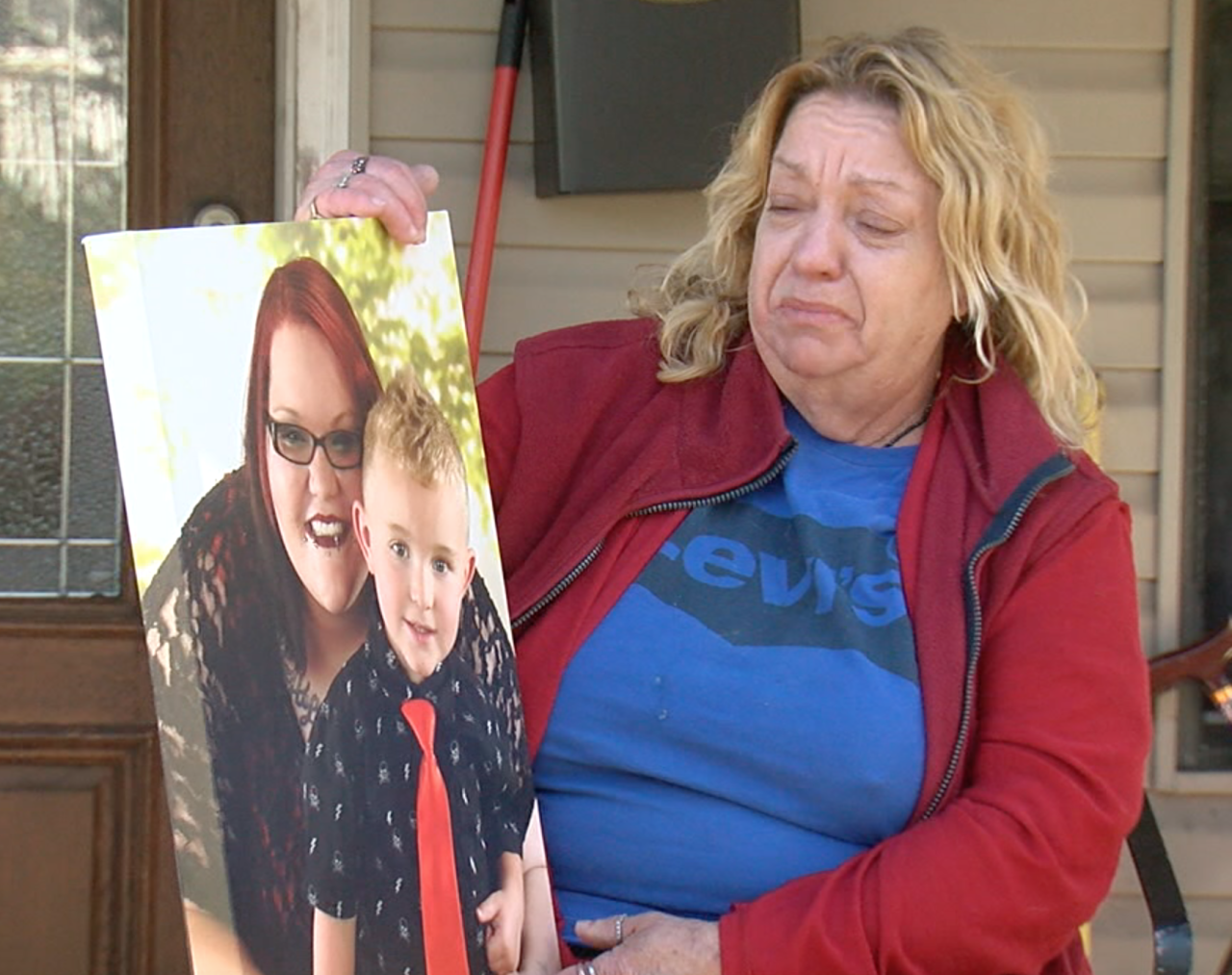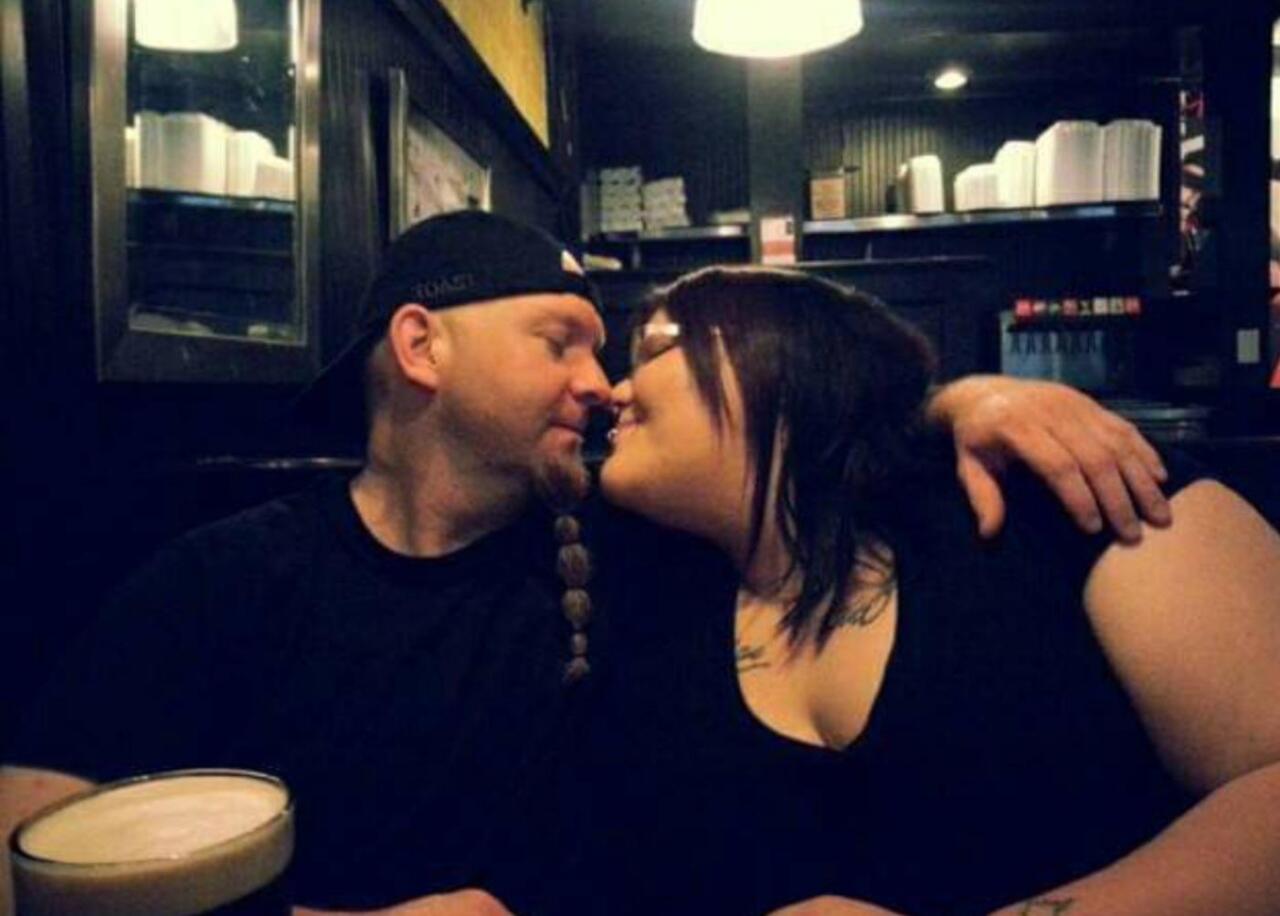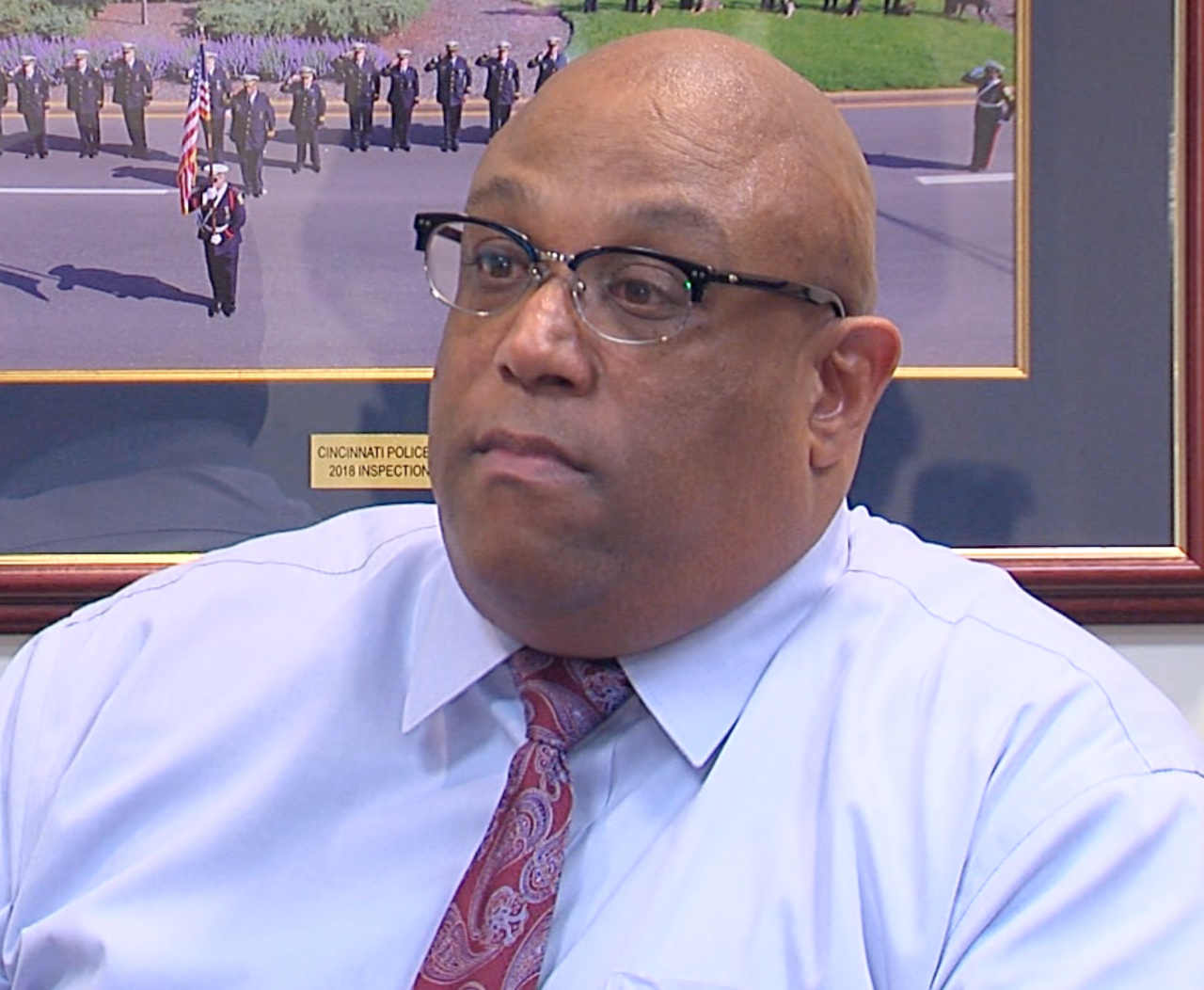Editor's Note: This is part of a week-long, three-part series of stories we are calling, "Cincinnati's Lost Year: Pandemic, Crisis and Recovery," which explores the less obvious impact of the coronavirus on people's lives and offer a glimpse of hope toward rebounding and recovery.
NORWOOD, Ohio -- Tears streamed down Bertie Keaton's face as she recalled the horror of learning that her daughter, 32-year-old Jessica England, had been shot and killed on Sept. 2 in England's Norwood home.

"I just kind of slid to the floor and cried," Keaton told the WCPO 9 I-Team. "It still feels like it was yesterday. I'm going to heal very slow if I heal at all."
England shared her home with 44-year-old William Waters, England's former boyfriend, and the father of her 6-year-old son.
A 7-year-old friend of England's son found her body in the basement of her home.
Minutes later, after the 7-year-old's grandmother called 911 to report England's death, Norwood police officers arrived at the home on the 5300 block of Hunter Avenue, searched the basement and found Waters had also been shot and killed.

Norwood police called the deaths of England and Waters a potential murder-suicide.
The Hamilton County Coroner's Office is still investigating the case.
It's a tragic example of the pandemic's indirect impact, or what the Centers for Disease Control and Prevention labeled "potential indirect effects of Covid-19," examined in our Rebound Investigation, Cincinnati's Lost Year: Pandemic, Crisis and Recovery.
Recent studies found deteriorating social conditions are among the reasons for surges in gun violence in many larger cities, including Cincinnati, and dramatic increases nationally in reports of depression, anxiety and suicidal thoughts.
"Jessica and Billy had a very toxic relationship," said Ashtin Walker, a close friend of England's for 20 years. "At a funeral two weeks ago, Jessica's casually telling me that they got into a fistfight that morning."
Walker, 32, said even though England stopped dating Waters months earlier, Waters continued living in England's house and helped her pay bills so England wouldn't lose her home.

"When the pandemic hit, Jessica's escape options were taken away from her," Walker said. "They were stuck together in a small home. The house was their cage, everything piled on and this giant volcano erupted."
Domestic disturbance and violence reports in Norwood have doubled during the pandemic, according to Norwood Police Lt. Ron Murphy.
"Without a doubt, when you look at all of the factors, the pandemic has something to do with that," Murphy said.
Calls to domestic violence hotlines operated by Cincinnati nonprofit Women Helping Women increased 53% in mid-March through June 2020 compared to the same period in 2019, according to Kristin Shrimplin, the organization's CEO.
Women Helping Women provides assistance to domestic violence survivors in Hamilton, Butler, Brown and Adams counties.
"It's extremely alarming," she said.
Shrimplin said the nonprofit's domestic violence response teams have "seen an increase in strangulation, use of weapons and threats to kill women."
Shrimplin said the pandemic forced the nonprofit to cancel critical fundraising events. That resulted in a 36% budget cut -- about $320,000 -- which eliminated therapy and financial assistance for survivors.
Ohio also lost $20 million in federal aid this year to fund agencies that provide survivors' services, according to Shrimplin.
"I have never seen it this bad," Shrimplin said. "We're really scared right now."
Gun violence in Cincinnati
On Aug. 16, shootings in four different Cincinnati neighborhoods left four people dead and another 15 injured. Three of those shootings happened within a 90-minute period, according to the Cincinnati Police Department.

"I had a bullet come through my window for the first time in 55 years, so it's gotten bad," said Larry Robinson, who spoke with WCPO 9 News on Sept. 16, the day three people were shot and killed in an Avondale apartment near his home.
CPD data show a dramatic increase in homicides and gun-related violence in Cincinnati this year: The city had 82 homicides during the first 10 months of 2020, according to the most recent report provided by CPD. That's a 40% increase over the previous three-year average of 58 murders during the same time period.
The I-Team's analysis of CPD data shows 56% of the city's 2020 homicides occurred in just seven of Cincinnati's 52 neighborhoods: Westwood (8), West End (8), Mount Airy (7), Avondale (7), North Avondale (5), East Price Hill (5), and CUF (4).
"We have communities that are basically under post-traumatic stress," said Cincinnati Police Chief Eliot Isaac.

A recent national study, Pandemic, Social Unrest and Crime in U.S. Cities, examined crime during the pandemic in 27 American cities, including Cincinnati.
The study found the initial surge in violence in many larger cities began a week following the May 25 Minneapolis police killing of George Floyd.
Richard Rosenfeld, co-author of the study, said many larger city police departments devoted more time to mass protests and less time on traditional and effective face-to-face approaches to policing, due to concerns about COVID-19.
"We're not going to get out of this spike in violence, including gun violence, until we subdue the pandemic," Rosenfeld said.
But Isaac said efforts by local, state and federal law enforcement are already having an impact on gun violence in Cincinnati by rekindling community partnerships and targeting illegal guns and the criminals who use them.
"Our Gun Crime Task Force has done tremendous work," said Isaac in an Oct. 22 interview. "In the past eight weeks, they've taken over 120 illegal guns off the street."
Isaac said law enforcement alone can't solve gun violence that has increased during the pandemic the most in some of the city's most disadvantaged neighborhoods.
"Gun violence is a symptom of a greater disease, and that disease is poverty," Isaac said.
"It's a huge catastrophe," said Dr. Edward Wallace, a University of Cincinnati professor who has focused much of his research on public health in minority communities.

Wallace told the I-Team the pandemic reveals the effects of systemic racism for many predominately low-income African-American and Hispanic neighborhoods already lacking access to quality health care, education, housing and employment opportunities.
"Not only haven't we learned much, but we haven't done anything to prevent it from actually getting worse," Wallace said.
The significant increase in gun violence in some areas of Cincinnati is in stark contrast to reductions in violent crime in other neighborhoods and surrounding cities where there are generally smaller percentages of minority residents and where family income is higher, according to census data.
Wallace said the pandemic's toll is particularly hard on Black and Hispanic people who "have the right to be treated equally" but are collectively experiencing "even more unfairness and racism" during the pandemic.
Studies show Black people are 3.5 times more likely than white people to die from COVID-19. Hispanic people have double the COVID-19 death rate of white people.
"We have to do a better job of reaching the community in terms of dealing with some of the real problems they're dealing with every day," Wallace said.
Increased violence in some communities, social isolation and financial insecurity are prompting growing concerns that COVID-19 is also fueling a "mental health pandemic."
Mental health crisis
Kelly Conklin remembers feeling frozen with fear during the spring lockdowns in Ohio.
"I would be in a panic to the point where I was hyperventilating," Conklin said. "I just felt like I couldn't calm down."
Conklin, a human resources director for a business in Warren County, said her anxiety and depression peaked after her best friend lost his job and moved in with her family.

"There was a lot of tension and anger within the household," Conklin said. "I started eating a lot less. I started staying up really late. My immediate friend group became alcohol, pretty heavily."
A survey in late June by The CDC found 41% of adults reported struggling with mental health or substance use as a result of the pandemic.
That CDC survey of 5,412 adults in the U.S. found participants reported a 3-4 times higher rate of negative mental health episodes and substance use compared to results of a 2019 CDC survey.
The pandemic has forced many service providers to find new ways to help people in crisis, especially those who were vulnerable before COVID-19 arrived in our communities.
"We've seen an increase in deaths, but it's not clear if it's related (to the pandemic) or not," said Linda Seiter, Executive Director of Caracole, a Cincinnati nonprofit providing services for people with human immunodeficiency virus, also known as HIV.
Due to concerns about COVID-19, Seiter said, Caracole caseworkers meet remotely with clients.
Seiter said staff is also making "food drops" to clients who are unable or unwilling to travel for food.
"They need to be carefully monitored, and they're not because some people are afraid to go out," Seiter said.

The pandemic also is impacting the mental health of some first responders who faced the added risk of exposure to COVID-19 and sometimes were targeted by protesters during mass gatherings opposing police brutality.
"There's just the fatigue, the exhaustion, the lack of appreciation, the risk that's involved," said Cinnamon Reiheld, a West Chester therapist, who focuses her practice on first responders.
Despite growing concerns about the pandemic's impact on mental health, the I-Team couldn't find empirical evidence of an increase in suicides across the country or in the Cincinnati area. In fact, suicides in Hamilton and Butler counties decreased from January to October 2020 compared to the same period in 2019, according to the coroner's offices in those counties.
Still, therapists, social workers, physicians and law enforcement officials interviewed by the I-Team all expressed concerns about the growing number of COVID-19 cases this fall and the impact that can have on mental health.
"They are increasingly wondering if they can keep going," Reinheld said.
Fatal drug overdoses
When Green Township police arrived at the home of Richard Vande Ryt on March 16, they found him unconscious on his back.
Despite efforts by police and firefighters to resuscitate him, Vande Ryt never woke up, according to the police incident report. The former Green Township police officer and defense attorney was 49 years old.

The Hamilton County Coroner's Office determined that Vande Ryt had overdosed on fentanyl, an opioid up to 100 times more powerful than morphine, according to the Drug Enforcement Administration.
A criminal investigation found that Vande Ryt requested cocaine from a friend, Amanda Witt, but Witt gave him fentanyl, according to a statement provided by the Hamilton County Prosecutor's Office.
"Drugs affect our entire community," said Hamilton County Prosecutor Joe Deters in the statement. "Sadly, we are seeing more cases where people think they are ingesting one substance when, in reality, it is something much deadlier."
Prosecutors charged Witt, 26, with involuntary manslaughter in Vande Ryt's death, along with corrupting another with drugs and tampering with evidence. She pleaded not guilty and is being held in the Hamilton County Justice Center on a $500,000 bond.
The overdose happened one week after Ohio Governor Mike DeWine declared a state of emergency due to COVID-19.
In the first few months of the pandemic, fatal overdoses surged across parts of Ohio, Kentucky and Indiana -- including Hamilton County -- according to police reports, various academic studies and databases that examine drug overdose data.
"May and April were very high in deaths," said Newtown Police Chief Tom Synan, a founding member of the Hamilton County Heroin Coalition, now known as the Hamilton County Addiction Response Coalition.
"It had a significant impact on the people around here," Synan said.

In April, following the overdose deaths of 13 people in five days, the city of Cincinnati and Hamilton County issued a public health alert warning about the risks of fentanyl use.
In May and early June, 65 people died of overdoses in Hamilton County prompting another public health warning about fentanyl.
"We were very concerned," Synan said.
Many experts, including Synan, had predicted the pandemic would cause an increase in drug overdoses.
COVID-19 initially disrupted the fentanyl supply from China, according to the DEA. Synan said that caused users to lose their tolerance for fentanyl, which put them at greater risk of overdosing when the drug began pouring into the area again.
The lockdown and lack of human-to-human contact impacted drug treatment and outreach, according to Synan.
"It was the worst thing that could happen to someone with an addiction," Synan said.
Synan said drug overdoses in Hamilton County have "leveled off" in recent months, which he said is partly due to users regaining contact with their support systems: Current trends in data suggest there could be up to 380 fatal overdoses in Hamilton County in 2020, Synan said, which would be an 11% decrease from the 427 fatal overdoses reported by the coroner's office in 2019.
"Our fear would be if there's a shutdown again," Synan said. "That would be harmful."
The recovery
Some of the plans for the pandemic recovery are becoming clearer.
United States Attorney David DeVillers announced last week that Hamilton County will receive $1.7 million in federal grants to prevent and combat crime. The grants include $1 million for crime "hot spots," according to DeVillers' news release. Hamilton County will also receive a $700,000 "Strategies for Policing Innovation" grant. In September, Cincinnati Mayor John Cranley and Police Chief Eliot Isaac unveiled a $1 million plan to curb violent crime.
“A million dollars isn’t even close to enough to deal with the level of gun violence that we have, but it’s all we can afford,” said Cranley during the September news conference announcing the plan. Cincinnati would use the money to hire a second special assistant U.S. Attorney to prosecute local cases in federal court, establish community safety organizers, and increase police overtime, Cranley said.
Isaac said he hopes the community safety organizers will help improve quality of life and serve as important resources for residents.
“It’s my hope and vision that these safety organizers will help our most troubled neighborhoods,” Isaac said.
Cincinnati City Council has yet to vote on the plan.
In the Cincinnati area, first response commanders and medical service providers told the I-Team they are strongly encouraging their employees to take care of themselves, ask for help when they need it, and use the resources that are available.
"Patient deaths are really tough" for employees, said Denny Moell, program administrator for TriHealth's Lifting Caregivers, a support group for the 12,000 employees who work for the medical services provider.
TriHealth's healthcare network includes five hospitals: Bethesda North, Bethesda Butler, Good Samaritan, Good Samaritan at Evendale and McCullough-Hyde Memorial.
Moell said TriHealth Lifting Caregivers "works a little like a crisis intervention program."
"We kind of group together, leaning on each other," Moell said. "We need it now more than ever."
Moell said one of the group's goals is "to provide that immediate emotional first aid on every unit in every department for every shift." The group emphasizes the importance of identifying positive parts of each day and to use that to cope with the mental and emotional stress caused by the pandemic.
Kelly Conklin said positive coping exercises like painting helped her. She also volunteers and shares her experiences with others through the National Alliance on Mental Illness.
"It's important that we have this education for people so that people don't spiral like I did or, when they do, they know how to pull themselves out of that spiral," Conklin said.
The challenges can seem overwhelming, especially for those mourning the deaths of loved ones during the pandemic.
As she sat on the front porch of her Ludlow, Kentucky, home, Bertie Keaton held a large framed photo of her deceased daughter, Jessica, and Keaton's grandson.
Keaton promised that her extended family will take good care of him and make sure he continues to receive professional counseling for the sudden and violent deaths of his parents, which appear to be the result of domestic violence fueled by the pandemic.
"He's starting to talk now," Keaton said.
She choked back more tears.
"His favorite book is 'Where is My Mommy?'"
Community resources in the Tri-state area
Domestic Violence
YWCA of Greater Cincinnati
Hamilton County hotline at 513-872-9259 or toll-free at 888-872-9259
Brown, Clermont and Adams Counties hotline at 513-753-7281 or toll-free at 800-540-4760
Women Helping Women
Hamilton, Butler, Brown and Adams Counties hotline at 513-381-5610 or toll-free at 877-889-5610
Women's Crisis Center in Covington, Ky
Northern Ky hotline at 800-928-3335
Safe Passage in Batesville, IN
Southeast Indiana toll-free hotline at 877-733-1990
Mental Health
National Alliance on Mental Illness Resources
Butler County: Mobile Crisis Team And Consultation
(844) 4CRISIS (1-844-427-4747)
Clermont County: Crisis Hotline
(513) 528-SAVE (7283)
Hamilton County: Talbert House Crisis Hotline
(513) 281-CARE (2273) or text Talbert to 839863
National Suicide Prevention Lifeline
(800) 273-TALK (8255)
Youth America Hotline
(877) YOUTHLINE (968-8454)
Veterans Crisis Line
(800) 273-8255 and Press 1Text 838255
Narcotics Anonymous
Nar-Anon Family Groups(if you search for meetings, some are offered via Zoom)
Northern Kentucky Area of Narcotics Anonymous
In The Rooms(an app for all types of recovery)
Virtual NA (available via phone and online)



